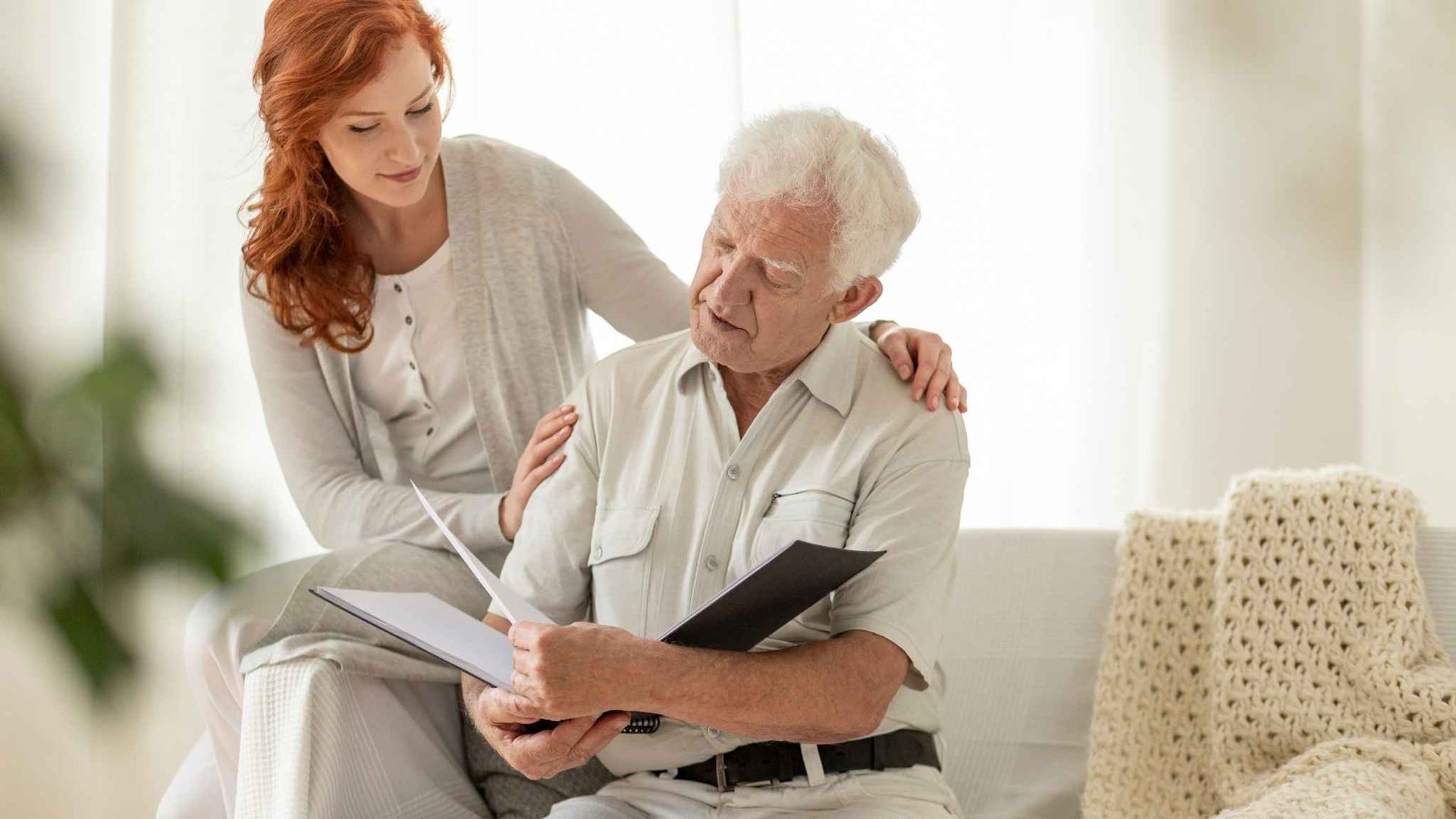Who Pays For Hospice Care At Home? 6 Options To Know
It's tough enough to face the reality that a loved one is already nearing the end of their life—and figuring out how to pay for hospice care is a whole other headache.
A hospice care service ensures that your loved one's quality of life won't be diminished as they approach the finish line—even under the thought that their serious illness won't be cured anymore. Come to think of it, it's a great end-of-life gift for them, but there's a looming concern: the costs.
Is Hospice Free?
Hospice care is not inherently free, whether at home or in a facility.
However, there are still many options for patients to get hospice services at no direct cost to themselves by tapping various funding sources.
The term "free" in this context generally means that the patient—or their family—does not need to pay expenses out of their own pockets because the costs will be covered by financial assistance programs. However, the extent to which hospice care is "free" will still depend on the patient's eligibility for these programs and the specific services they provide.
Who Pays For Hospice Care At Home In California?
If you're worried about the costs of hospice care, you're not alone. Many families face this concern, but several options can help lighten the financial burden. Knowing about the different funding sources available can make a big difference, ensuring your loved one receives the care they need without adding financial stress. Here are the primary ways to cover hospice care costs at home in California:
Medicaid
Medicaid serves as a lifeline for many low-income families in California needing hospice care at home. This benefit includes a wide range of services for terminally ill individuals, such as:
- nursing care
- medical social services
- physician visits
- counseling for patients and their families
- short-term inpatient care
- medical supplies
- home health aides
- therapy services
To access these benefits, patients must elect the hospice benefit by filing a statement with a chosen provider, acknowledging that other Medicaid services for curing their terminal condition are waived. However, they can revoke this choice at any time to resume regular Medicaid benefits.
A physician must certify that the patient is terminally ill, and a hospice plan of care must be established before services begin. Medicaid hospice care comes in different levels:
- Routine Home Care (RHC): Standard care at home.
- Continuous Home Care (CHC): Intensive nursing care during a crisis.
- Inpatient Respite Care (IRC): Short-term care to relieve caregivers.
- General Inpatient Care (GIC): Short-term care for pain control or symptom management that can't be handled at home.
There’s also a Service Intensity Add-On for care provided by a nurse or social worker in the last week of life.
Medicare
Medicare is a lifeline for many seniors in need of hospice care. To qualify, the patient must have Medicare Part A and receive certification from both their hospice doctor and their regular doctor (if they have one) that they are terminally ill with a life expectancy of six months or less.
The patient must also choose comfort care over curative treatments and sign a statement opting for hospice care instead of other Medicare-covered treatments for their terminal illness and related conditions.
Medicare covers nearly all expenses related to hospice care, including doctors' services, nursing care, medical equipment, and medications for pain relief and symptom management. While hospice care itself incurs no costs, there may be small copayments for outpatient prescription drugs and a portion of the Medicare-approved amount for inpatient respite care.
If the patient develops health issues unrelated to their terminal illness, Medicare will continue to cover those separately.
Private Insurance
Many work-based and private insurance plans include some hospice care coverage, but specifics can differ widely. It's essential to check with your insurance company to understand what your plan covers and the settings in which hospice services are available.
Every insurance plan has its own criteria for hospice eligibility and covered services. Reviewing your policy or speaking directly with your insurer will help you understand these details. While some plans may cover a comprehensive range of hospice services, others might offer more limited benefits.
If you have long-term care insurance, it may also help cover hospice care at home. This can include continuous home care, which is particularly beneficial during crises when intensive nursing care is needed. Knowing the extent of your insurance coverage can simplify managing hospice care costs and provide peace of mind during a difficult time.
Tricare
Tricare, run by the Defense Health Agency, ensures that military service members, retirees, and certain family members receive hospice care at home. This support is available throughout the U.S. and its territories, but not overseas.
Tricare's hospice services include physician visits, nursing care, counseling, medical equipment, necessary medications, and therapies like physical, occupational, or speech therapy. They also provide short-term inpatient care when it's needed.
VA Benefits
Alongside Tricare, the U.S. Department of Veterans Affairs (VA) offers hospice care for veterans and their families. This benefit is for those with a terminal illness and a life expectancy of six months or less, who are not pursuing curative treatments. The VA works with community and home hospice agencies to provide thorough and compassionate care, ensuring veterans can receive hospice services in the comfort of their homes.
Charity Funding
When seniors face the financial strain of hospice care, supportive options are available. Many hospice providers have funding programs to assist those who are medically eligible but lack insurance or the means to pay out of pocket.
Additionally, community organizations can be a lifeline, often stepping in to cover some or all of the hospice care costs based on a senior's eligibility and financial need. Groups like the American Cancer Society and the National Hospice and Palliative Care Organization often offer grants or financial aid to families in need. These charitable efforts ensure that everyone has access to the compassionate care they deserve, regardless of their financial situation.
Private Pay
For some families, covering hospice care out-of-pocket or through private pay might be necessary. While this option can be expensive, it offers the flexibility to choose providers that best meet their needs.
Families can manage these expenses more effectively by negotiating costs with hospice providers and exploring more affordable care options. Some providers may also offer sliding-scale fees based on income, providing some relief for those bearing the full financial responsibility.
What Is Usually Not Included In Hospice Care?
While hospice care covers a wide range of services, there are some treatments and services typically not included:
- Curative Treatments. Hospice focuses on palliative care and symptom management rather than curing the illness. Treatments aimed at curing the illness, like chemotherapy or radiation therapy, are generally not covered.
- 24-Hour In-Home Care. Standard hospice care usually does not provide round-the-clock in-home care. Families may need to seek additional help for 24-hour support.
- Room and Board. If the patient is in a hospice facility, room and board costs are typically not covered by hospice benefits and may require additional payment.
- Personal Care Supplies. Items such as adult diapers, wipes, and personal hygiene products are often not covered and may need to be purchased separately.
- Transportation. Routine transportation to and from medical appointments is not usually covered by hospice care.
Does Hospice Cover 24-Hour Care At Home?
Standard hospice care usually does not include 24-hour care. However, there are circumstances where round-the-clock care might be necessary, such as severe pain management or significant caregiver respite needs.
In these cases, families may need to arrange and pay for additional services. Options include hiring private caregivers or using supplemental services from hospice agencies that offer 24-hour care.
Additional Resources
Aside from the primary options for paying for hospice care, several additional resources can provide financial assistance:
- Social Security benefits may be available to help cover the costs of home hospice care.
- Veterans and their families may be eligible for specific benefits and assistance through the Department of Veterans Affairs (VA).
- Various nonprofit organizations offer financial assistance programs to support individuals receiving hospice care.
- Depending on the area, there may be local or community programs that provide financial aid or resources for hospice care.
Conclusion
Caring for a loved one during their final days can be overwhelming, but understanding your options regarding who pays for hospice care at home will ensure a smooth decision process from then onwards.
Whether it's through Medicaid, Medicare, private insurance, Tricare, charity funding, or private pay, there are many ways to ensure your loved one receives the compassionate care they deserve. By planning ahead and knowing what is covered and what isn't, you can make informed decisions that best suit your family's needs.
If you're considering
Olympia Hospice Care for your loved one, don't hesitate to
reach out to us. We are here to answer all your questions and provide the support you need. Let us help you provide the best care for your loved one!










